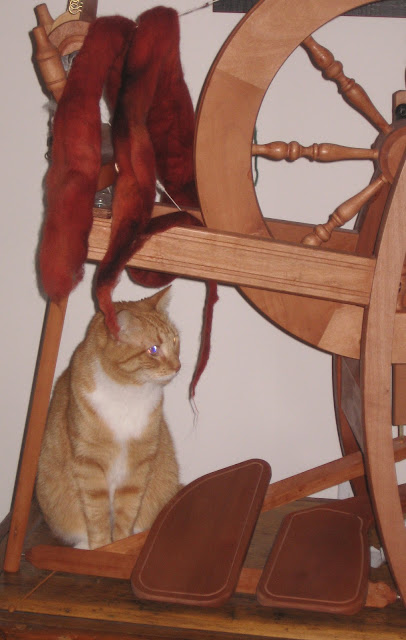I haven't been to Fair Isle, just seen it in the distance from North Ronaldsay. Here's a map showing the location of Fair Isle.
Fair Isle is part of Shetland, located 27 miles southwest of Sumburgh Head on the mainland of Shetland, and 27 miles northeast of North Ronaldsay, part of Orkney.
Here's a photo I took at Sumburgh Head in Shetland, you can see the puffins, they are as cute as their name sounds
I don't know why this tiny island gave its name to the Fair Isle style of knitting. I prefer to use the term "Fair Isle" to this traditional style of colorwork of Scotland, and use the term "stranded colorwork" to refer to anything else. It bothers me to see the term used for all colorwork styles. However, there is so much culture passed along shipping routes; see how close to Norway Shetland is...
Here's a sweater done in traditional Shetland colors, with a minimum of natural dying
I purchased Alice Starmore's famous book a long time ago; Alice also speculates in the book on why this teeny island gave its name to such a tour de force of style
This book has recently been reissued by Dover Publications in 2009; mine was published in 1988 by Taunton Press.
I think the only Alice Starmore pattern that I have done is a favorite, "Square Dance"
I'm sure I did it in Alice's Alice Starmore Scottish Campion. (A campion, BTW, is a flower in the family known as "pinks" or "carnations"). My sons wore this sweater and it now hangs in my nephew's closet. This is from Stillwater; so why did I trash my copy as it now goes for $70 new on Amazon??
I knit this vest below, now an old chestnut, but can no longer recall where the pattern came from; I may have found a vest pattern and put it together with the classic peerie patterns, but I can't find either source in my book collection. "Peerie" means "small" in Shetland dialect but I also heard it used in Orkney; it also refers to the repeat in a Fair Isle pattern.
The yarn is a Green Mountain Spinnery single ply fingering weight that no longer exists. I might wear this tomorrow to keep me warm, it's cold here this month...



































































